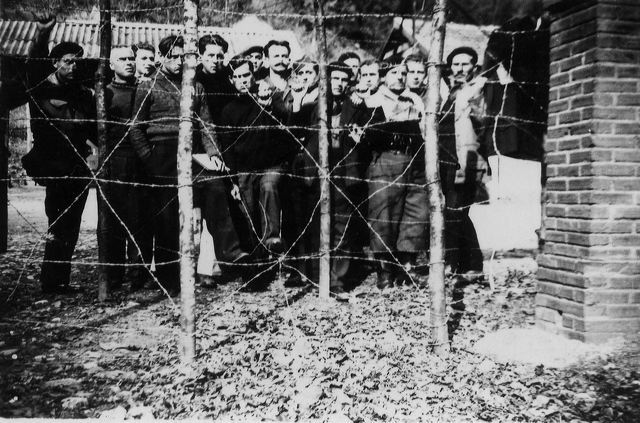Witold Januszewski 1915 – 1981
Witold Januszewski
1915 – 1981
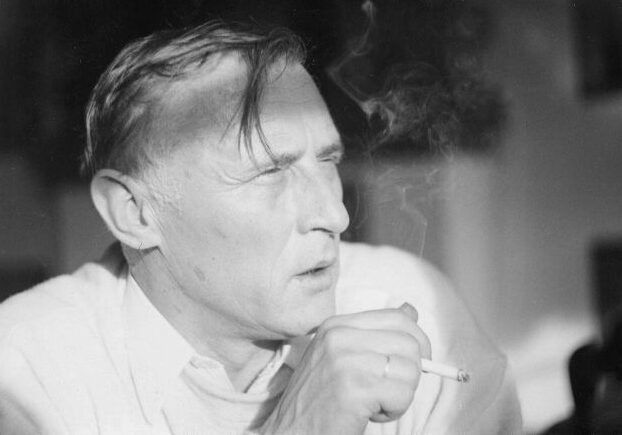
Between Grodno and Paris
1 – Polish Roots
Early Years
Witold Januszewski, son of Antoni Jan and Apolonia maiden name Pawlowska, was born on February 2, 1915, in Grodno, in what is now Belarus. His family, whose history is important to the artist, bears the Dabrowa coat of arms. His childhood spent in Grodno and on the estate on the Niemen River often reappears in his art. Depictions of the stone Orthodox church in Grodno, the family home, and the wood transported on the Niemen River, along with the figure of a solitary floater, appear in several of his drawings, often symbolically, expressing nostalgia for his homeland, so intense during his exile.
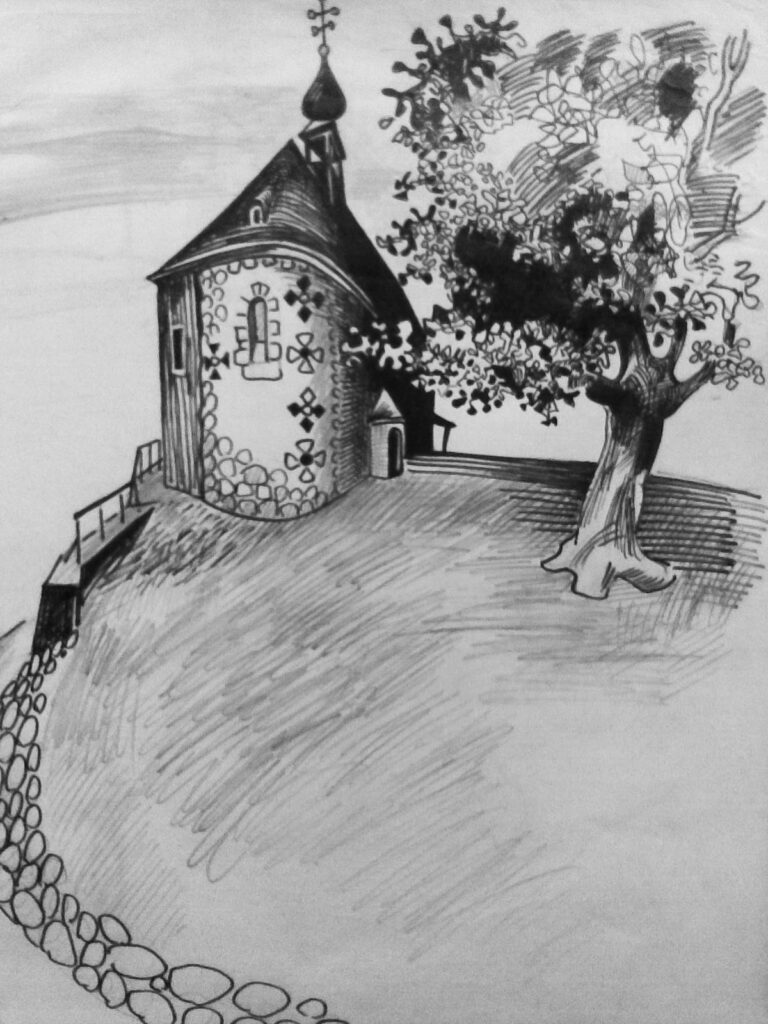
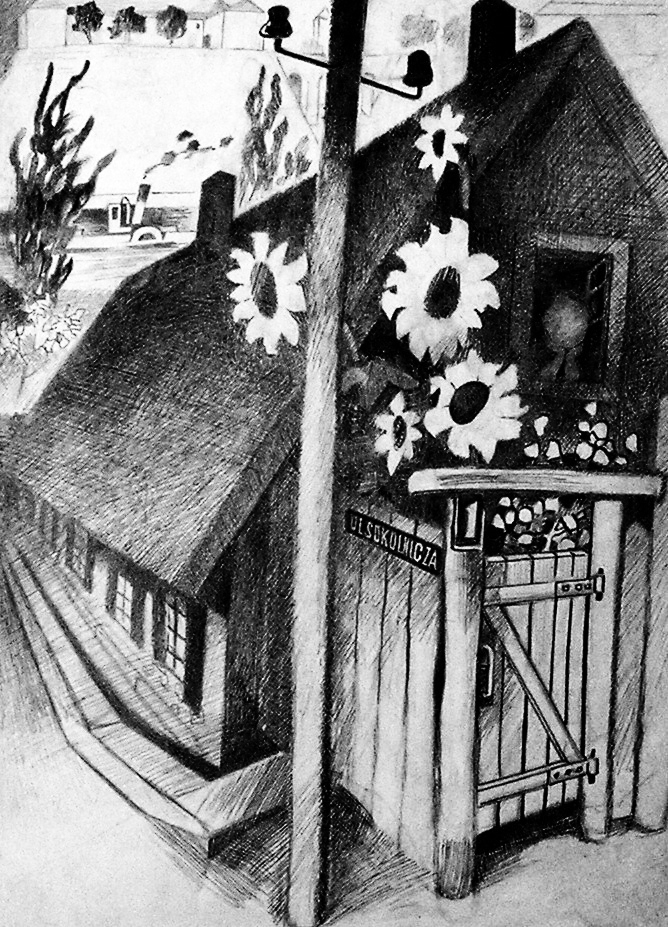
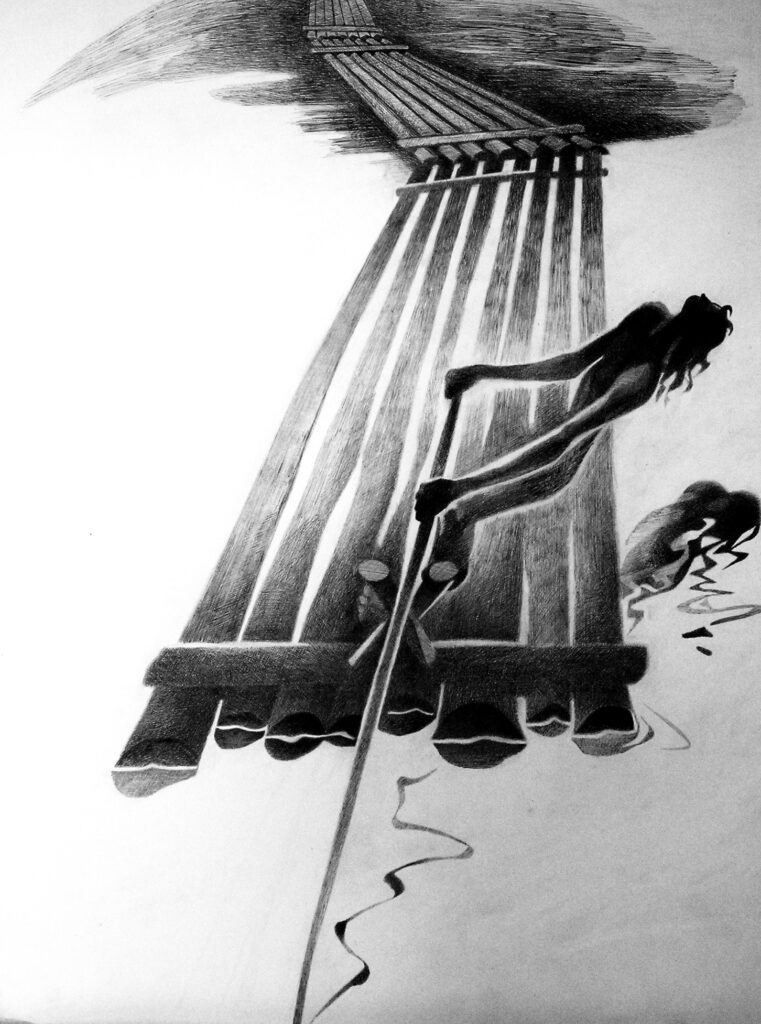

Artistic Training
He chose Warsaw, not Vilnius, to pursue his artistic studies, even though it was closer both geographically and from a family perspective. He then fully enjoyed his youth and devoted himself to sports (hiking, skiing, swimming, and rowing on the Niemen). Anything that allowed him to get close to nature fascinated him. He completed his studies just before the Second World War.
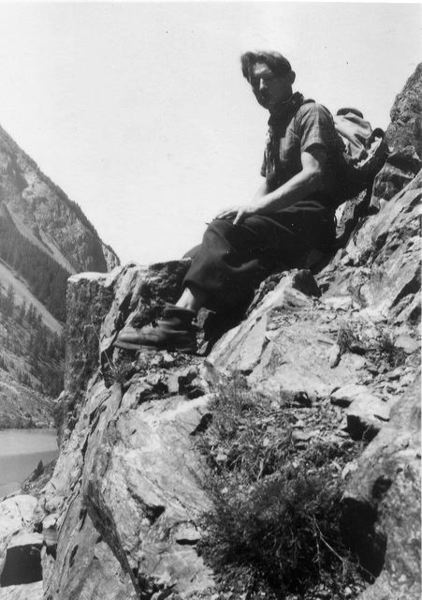
2 – The War Years
Arrival in France
Januszewski was mobilized from the beginning of the war. He left Poland with the army after the defeat of September 1939 and arrived in France in January 1940. After an attempt to leave for England, he managed to reach the free zone.
Internment Camps
He was interned in camps for foreigners in southwest France, notably in Argelès-sur-Mer, Livron, and Montestruc. Representatives of the Polish authorities in London, eager to keep interned soldiers ready to fight, strove to maintain their morale by organizing activities, with the agreement of the French administration. Thus, in 1941, Januszewski participated in the first Polish YMCA instructors’ course in France, in Alvignac in the Lot region, and received commissions to create decorations and postcards.
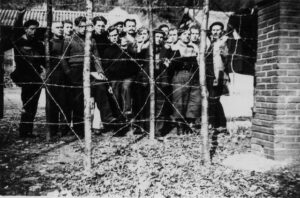
Artists in Clandestine Life
During his time in the Livron camp, he became friends with Józef Lobodowski (1909-1988), a young but already well-known and controversial poet, as well as a fervent patriot. His career as an illustrator began in the columns of the military and patriotic magazine Wrócimy (We Will Return), published clandestinely by Lobodowski in Livron. Rosa Bailly, Edward Kubinski, Stefan Kuryllo, Henryk Palmbach, Wladyslaw Pelc, Andrzej Sieminski, Kazimierz Wierzynski, and Maria Winowska were among the magazine’s contributors. Wrócimy was not the only clandestine Polish publication in France, but it was distinguished by its high quality from an ideological, literary, and artistic perspective, particularly thanks to Januszewski’s woodcuts.
The Resistance
In 1942, the artist illustrated a collection of poems by Julian Dobrowolski-Szynalik (1912-1987), a young Polish literature graduate from the mountainous Podhale region and member of the Polish Resistance. The volume, entitled Zbuntowana wolnosc (Liberty in Revolt), was published by Samuel Tyszkiewicz in Nice. Januszewski, like Szynalik, was active in the Monika network (POWN – Polish Organization for the Struggle for Independence), one of the Polish Resistance structures in France.
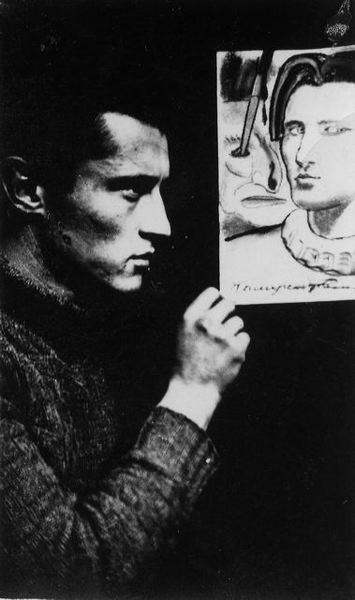
Crossing the Pyrenees
In Toulouse, he met a Polish art history student from Lomza, Félicia Borkowska, whom he married in 1942. When the Nazis occupied free zone, the young couple clandestinely crossed the Pyrenees with a group of Polish officers, probably under orders from the Polish authorities in London, to reach England via Spain and Portugal. After various adventures, they settled in Barcelona in 1943. The details of their stay in Catalonia are still unknown. We only know that they participated in the Polish Red Cross’s children’s aid program. Januszewski was finally able to devote himself to his art, and the results of his intensive work were soon evident.
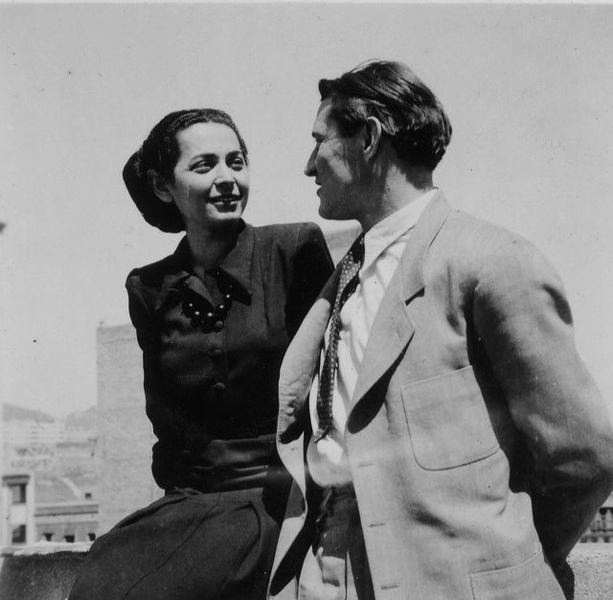
3 – Artistic Beginnings
He opened his first solo exhibition in Barcelona, featuring 50 oil paintings, gouaches, and drawings – at the Palacio de la Virreina. The exhibition was accompanied by a small illustrated catalog. The Barcelona critics and public, having had few opportunities to experience the art of a country located at the other end of the European continent, received it favorably. In 1947, a second successful exhibition was held at the Franquesa Gallery. That same year, the artist designed the sets for the exhibition devoted to French books at the French Institute in Barcelona. A true artistic career was opening up before him.
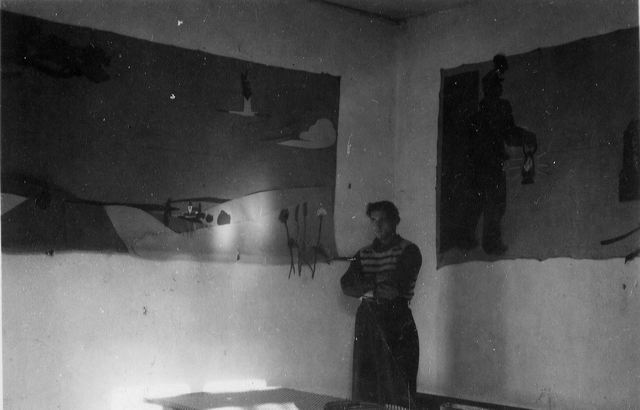
4 – Settling in France
The First Years in Montmartre
At the end of 1947, Januszewski left Spain for Paris and settled in Montmartre. His artistic enthusiasm continued in the post-war period. He actively participated in the life of the Polish community in France. The Januszewskis were close to the writer Maria Winowska and corresponded regularly with Józef Lobodowski, who was then living in Madrid. Witold illustrated his poetry collection Uczta zadzumionych (The Feast of the Plague Victims), published in 1954 in Paris. He had lively relationships with Polish émigrés in Great Britain and the United States. Some documents suggest that he intended to travel across the Atlantic.
The Polish Artistic Community in France
Januszewski was closely involved with the Polish artistic community in Paris, which was formed around the Union of Polish Artists in France, whose meetings he attended. He forged ties with his colleagues, as evidenced by a portrait he painted in 1948 of the Polish engraver and painter Konstanty Brandel. He participated in the exhibition of works by Polish artists with ties to France, some of which, such as those of Marcoussis, Boznanska and Pankiewicz, were exhibited posthumously at the Galerie des Beaux-Arts in Paris in 1948. Witold’s works were also part of the exhibitions organized by the Union at the Polish Seminary on Rue des Irlandais in Paris in 1952 and 1954. In 1956, he took part with 22 artists, including Konstanty Brandel, Henryk Berlewi and Franciszek Black, in the Exhibition of Polish Painters and Sculptors in France organized by the Friends of Polish Art association at De Boeck’s Hotel in Brussels. In 1959, he was noted for his participation in the 1st Salon of Polish Artists in France in Lille.
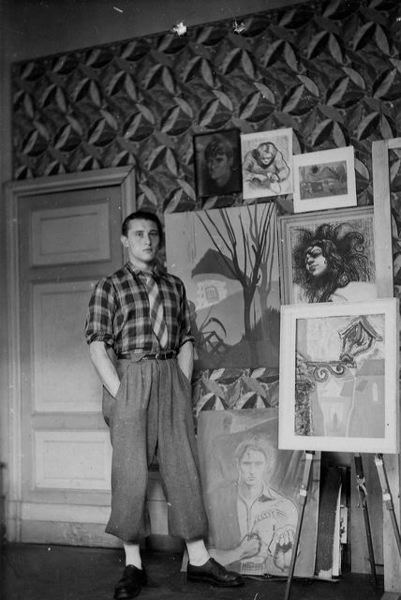
5 – Artistic Activities
Work as a Graphic Designer and Illustrator
At the same time, while continuing his pictorial work, he worked as an illustrator, initially for Polish publications, notably Slowo Polskie (The Polish Word), the post-war organ of Polish emigration published in Paris, and the Catholic magazine Mlode Serce (Young Heart) published in the North. He then collaborated with the French press and publishing houses (Bayard and Bonne Presse – now Bayard Presse) and also designed postcards and calendars.
Commissions for churches
He also created church decorations, including those for the Polish church of Notre-Dame-de-Waziers, in the Nord department, and the church of Notre-Dame-des-Chênes in Ermont, near Paris (the oak statue of Notre-Dame made for the church in Ermont, the copper statue of Christ, and the candlesticks were stolen; only photographs of them have survived).
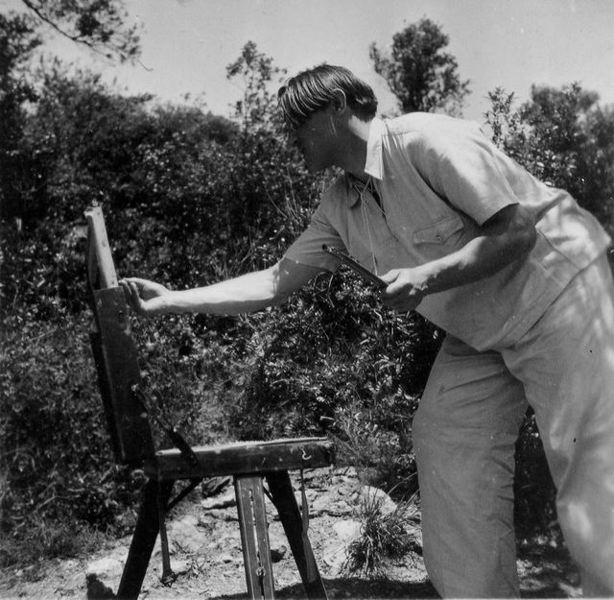
6 – Grodno-Paris, one-way
The choice
In the post-war period, the artist apparently considered his stay in France temporary, undoubtedly hoping for political changes in Poland – particularly the fall of the communist regime that would have allowed him to return to his native country. Until 1955, he used his Polish passport issued in 1943 by Jozef Potocki, chargé d’affaires of the Polish Legation in Lisbon, then extended in Madrid. It was only when he could no longer renew his Polish passport that he applied for political refugee status in France. In 1959, he obtained French nationality.
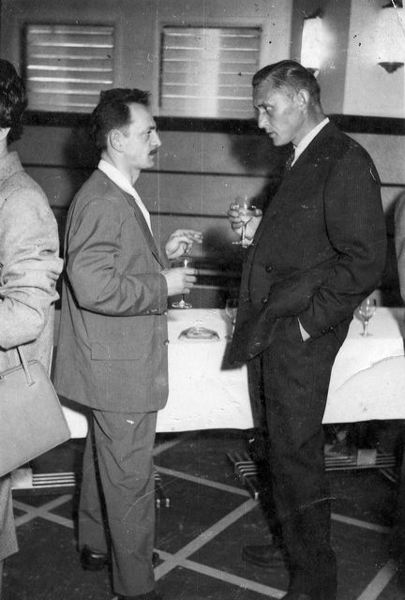
The Working-Class Period
From the mid-1950s, despite intense artistic activity as a painter and graphic designer, circumstances and the harsh reality of his life forced him to seek work as a manual worker. He worked at British Petroleum (BP) from 1957 to 1973. He did not abandon painting, although he was only able to devote weekends and holidays to it. This 15-year “working-class” period allowed him to discover a world that had been completely foreign to him until then. This experience resonates in some of his works. Curiously, it was during these difficult years that his style developed, thanks to his exposure to the lively Parisian art scene, reaching maturity in the early 1970s. The artist continued to exhibit, mainly in group exhibitions and salons.
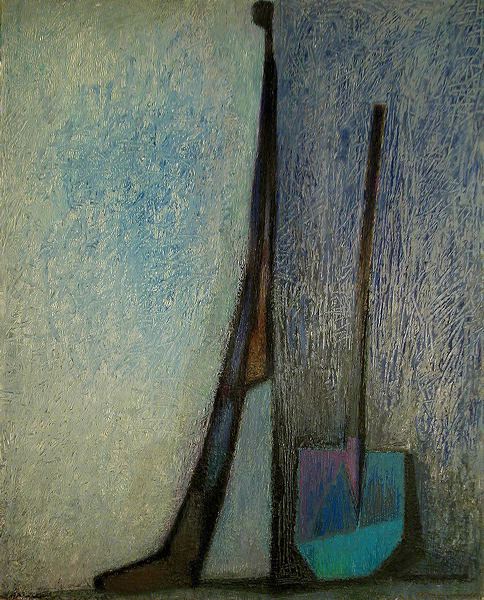
7 – A Mature Style
In 1974, a major exhibition of his work was held at the Galerie Lambert on the Île-Saint-Louis in Paris, a center of Polish artistic life. Januszewski displayed some twenty large-scale canvases and drawings, forming a high-quality, coherent, and harmonious ensemble. French critics considered this exhibition a late artistic debut, while emphasizing the artist’s maturity and inner richness.Yet, Januszewski’s true artistic debut took place in Barcelona in the 1940s. It was the turbulent history of the second half of the 20th century that forced the artist to constantly renew his efforts, in a sort of endless wandering, without giving him the opportunity to capitalize on the successes he had achieved. His Spanish achievements counted for nothing in Paris, just as the reputation of Polish art schools was not truly valid in Spain. The fate of an émigré always seems the same. When he leaves his native country, he never feels at home anywhere, even if he is perfectly integrated into the host country. He always has to prove himself. Added to this is nostalgia and the false hope of a better, easier life elsewhere. The lost homeland is not easily replaced. Between France, Spain, then France again and the dream of distant America, the artist always searches for Grodno and the picturesque banks of the Niemen. However, the importance of the French environment should not be underestimated. The unique artistic atmosphere of Paris, even though, after the war, New York supplanted it as the world capital of art, certainly contributed to the maturation of his style. Witold Januszewski died in 1981 in Ermont, near Paris. Before his death, he was unable to see his native Poland, which he missed so much. Today, a little over a quarter of a century after his death, the Polish public can finally discover a work that has never before been exhibited in his home country.
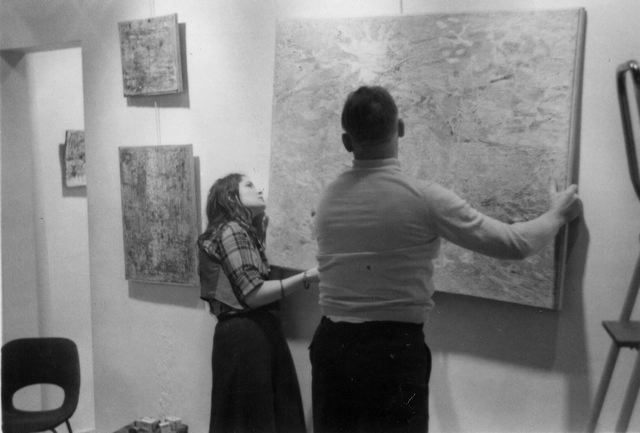
| Ewa Bobrowska-Jakubowska, Art historian Exhibition curator in Poland 2007 – 2010 |

